#celtic ornament
Text

Celtic bird. My artwork
#celtic ornament#celtic art#celtic#celt#celtics#celtic tattoo#celtic bird#celtic style#celtic design#celtic illumination#кельты#кельтское искусство#кельтика#кельтский орнамент
84 notes
·
View notes
Text
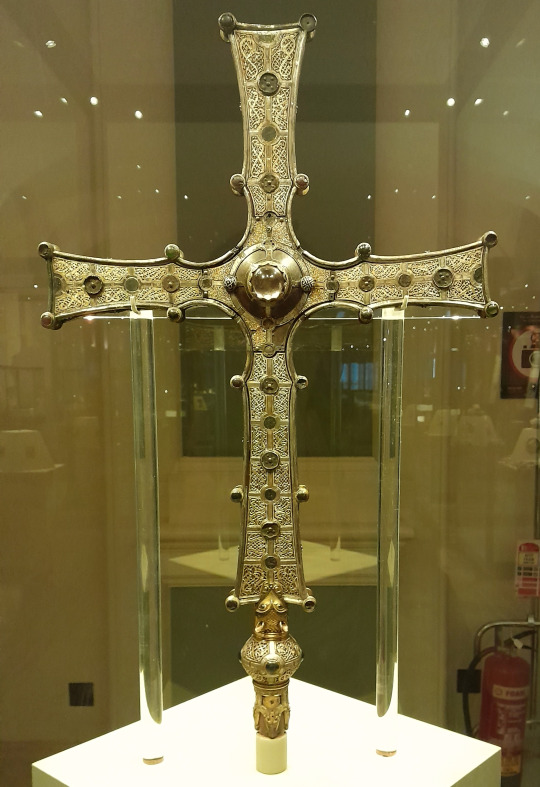

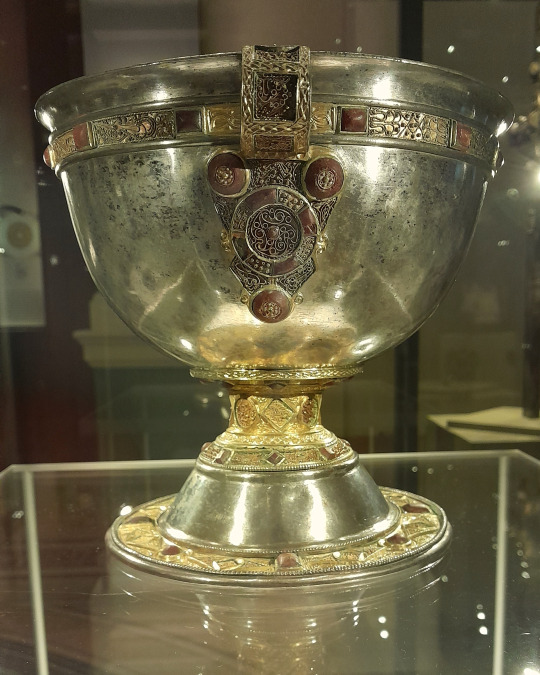
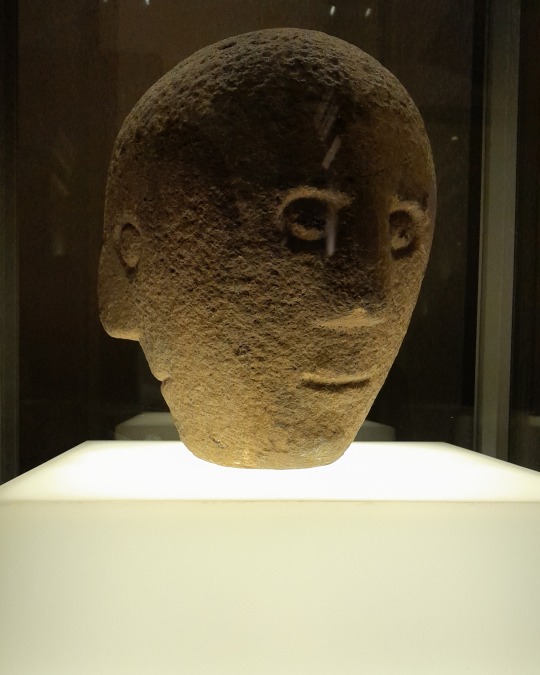

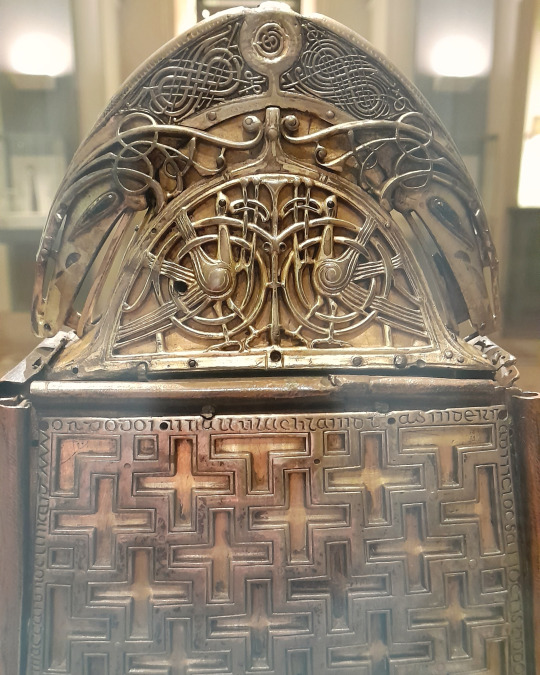
amazing treasures from the Archaeological Museum of Dublin (entrance is free, btw!!)
#archaeology#ireland#archaeological museum#medieval#ornaments#gold#irish art#medieval art#celtic art#jewelry#art history#irish history
6 notes
·
View notes
Text

The Count Dracula
The vampire Dracula dressed in a purple cape with blood red highlights, with gothic motifs and Celtic ornaments. Designed by the graphic designer Tizika. Watch this design and more in the Tizika's custom T-shirt store.
#count#Dracula#vampire#Nosferatu#bloodsucker#dracula#romania#Carpathian#ornaments#gothic#celtic#spiral#Violet#red#bloody#gore#cape#emblem#horror#horrible#tshirtdesign
3 notes
·
View notes
Photo
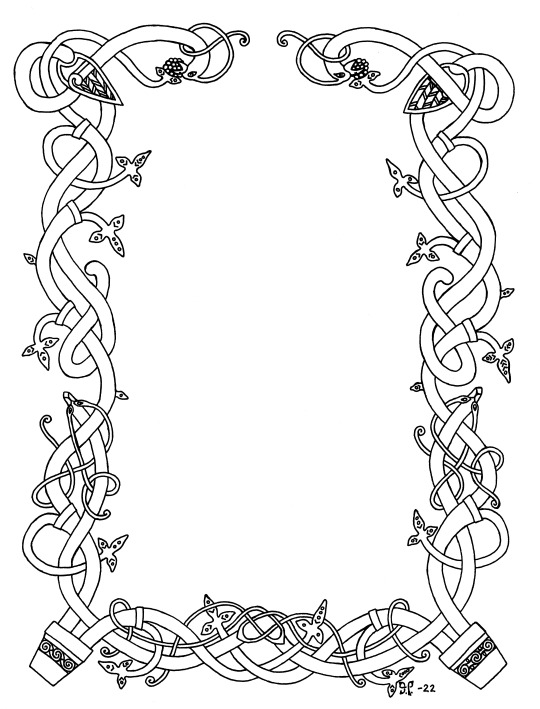
Another Celtic knot! (:
#celtic#knotwork#intricate#artwork#lineart#artistsontumblr#viking#design#book of kells#irish#traditional#ornament#zoomorphs#potted plants#jpmorrow-art
10 notes
·
View notes
Text
Golden navy blue celtic knots cross stitch hand embroidery pattern
#crossstitchpattern #xstitch #crossstitch #needlecraft #stitching #needlework #needleart #embroidery #crossstitchart #embroideryart #Stitch #needlecraftart #ornaments
Easy cross stitch design:
This cross stitch pattern uses only full stitches. It is suitable both for beginner and expert embroiderers.
Golden navy blue celtic knots cross stitch hand embroidery pattern – Tango Stitch
You will receive a PDF file of Tango Stitch cross stitch pattern:• A main page with embroidery image;• A page with the key;• 2 pages with color and symbols patterns;• zoomed color…
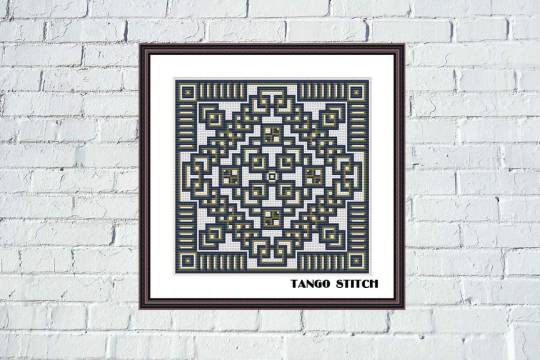
View On WordPress
1 note
·
View note
Text
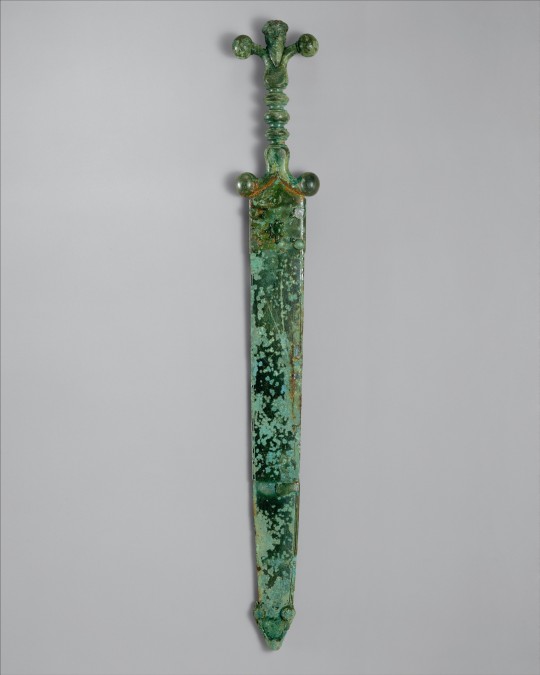
Sword and Scabbard
Celtic, ca. 60 BCE
Although the scabbard has become amalgamated to the iron blade, affecting parts of the surface, its ornamentation and the exquisitely worked hilt make the whole an evocative statement about the technical ability of the Celts, the powerful conquerors of ancient Europe. The sword is of a type associated with the La Tène culture, named after the important Celtic site on Lake Neuchâtel in present-day Switzerland and eastern France. Other related anthropomorphic swords from diverse finds in France, Ireland, and the British Isles demonstrate the expansion of the Celts across Europe.
311 notes
·
View notes
Note
What are some good places to look for manuscript style inspiration?
✸ Victoria and Albert Museum's Gallery
Contains lots of examples with descriptions. Sorted by Place of Origin, Material, Type, Time, etc.
✸ "The World of Ornament" by Auguste Racinet & Auguste Dupont-Auberville
Also contains a lot of examples of ornaments from Illuminated Manuscripts. Also sorted by Place of Origin, Type and Time.
✸ Alternatively you can search:
Book of Hours - Illuminated Christian prayer books. They were one of the most common types of Illuminated Manuscripts so you should be able to find lots of examples
Book of Kells - Celtic Gospel Book in Insular Style
Westminster Abbey Bestiary - 13th century Manuscript that contains lots of Animal Depictions
The Morgan Bible (or Crusade Bible) - 13th century Illuminated Manuscript made in France with illustrated events from Old Testament.
✸ And just some generally useful information:
What are Illuminated Manuscripts (who and why were making them)
A process of making an Illuminated Manuscripts (that for some reason ends with a cheese documentary)
Types of Decorative Features in Illuminated Manuscripts
110 notes
·
View notes
Text



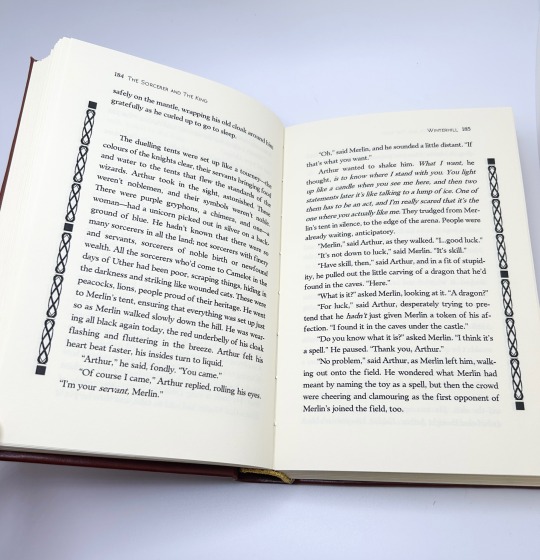


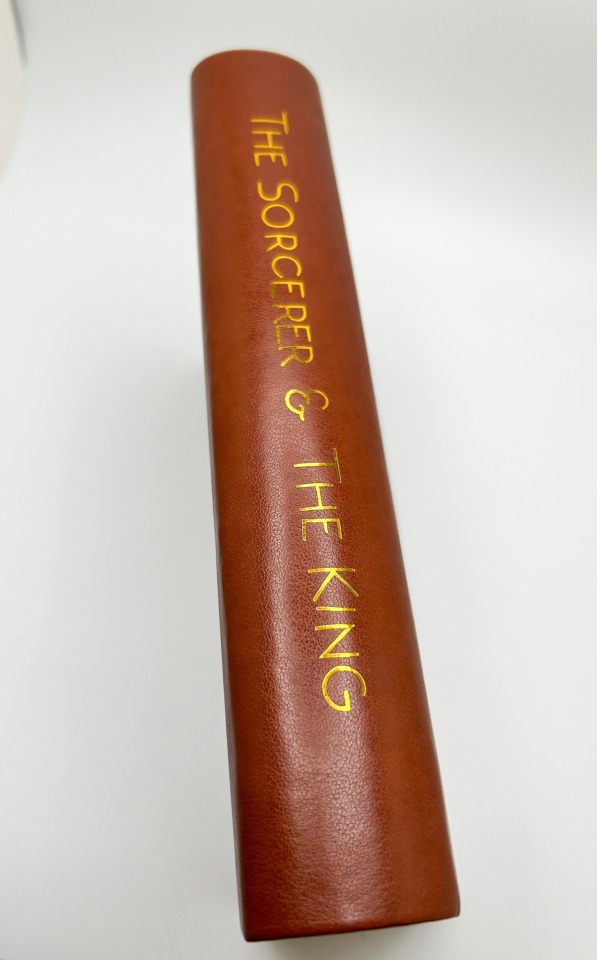
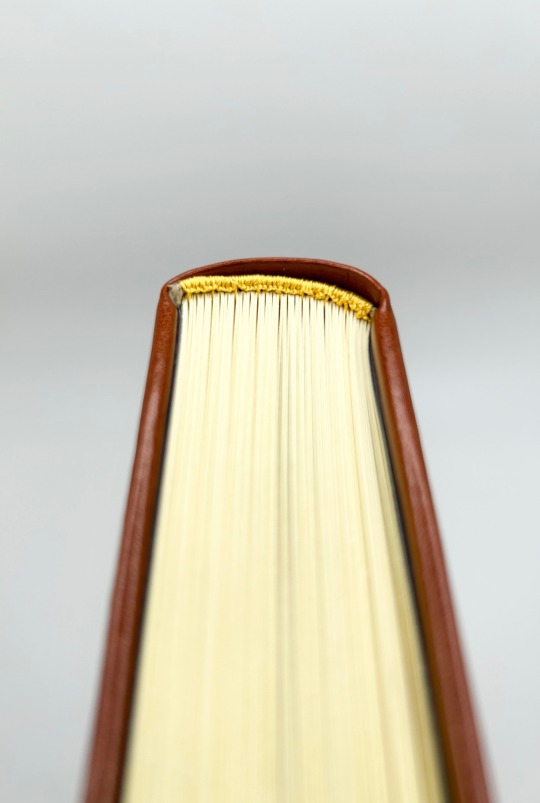
The Sorcerer & The King by winterhill
Canon AU -- Merlin's death is only the beginning; with no-one to protect the kingdom, Camelot falls to an enemy sorcerer and Arthur is forced to serve in the court that he once ruled. When an escape attempt goes horribly wrong, Arthur is rescued by someone he never expected to see again -- and it's their destiny to put things right.
fic by winterhill
art by lukita
404 pages / 85,529 words
Title Font: Neoteric, Ever, Celticmd
Body Fonts: Pilgrim, Far From Homecoming, YOZAKURA, Aliya Ramsey
More on the process below the cut!
Ah, this wonderful fic! This was a fic I hadn't read before @runawaymarbles put it on my radar, and it was utterly wonderful! Proof still that the well of fic is deep and vast, and there will always be another beautiful story waiting for you.
I had a lot of fun binding this one; aiming for a tome kind of vibe, with a full Better Than Goat leather case, deckled edges, and gold accents coupled with the Celtic medallion, which boasts both a dragon and a trinity knot. I thought this was fitting, given that the coin analogy between Merlin and Arthur comes up quite a bit in this fic - the idea that, because it's a canon AU, they've strayed away from their destiny, and what that could mean for Camelot. The trinity knot also symbolizes the cyclical relationship between life, death, and rebirth, which is another recurring theme throughout the story.
I also chose some medieval, old-style elements for my typeset, include the side ornaments, and making the margins bigger on the whole. I definitely need to bind more Merlin fic; I forgot how much of a delight this fandom is!
#fanficbinding#fanfiction#fanfic#fanfic bookbinding#fanfic binding#fanbinding#fanfiction bookbinding#ficbinding#fic binding#fanficbookbinding#renegadepublishing#me myself and i#merlin#bbc#merlin bbc#merthur#arthur pendragon#merlin/arthur
245 notes
·
View notes
Text
The gods of Gaul: Cernunnos
Cernunnos is without a doubt one of the most famous gods of Ancient Gaul, and yet he is actually one of the most mysterious Gallic deities. Sure, he definitively marked the imagination of people - I mean he was literaly used as the basis for the Wiccan Horned God, and you will see lots of Cernunnos-copycats in fantasy RPGs and the like. But... we actually do not know the truth about this god, and despite everybody on the Internet trying to make it sound like we have an easy and simple summary of what he is, we only have strong theories and conflicting hypothesis.
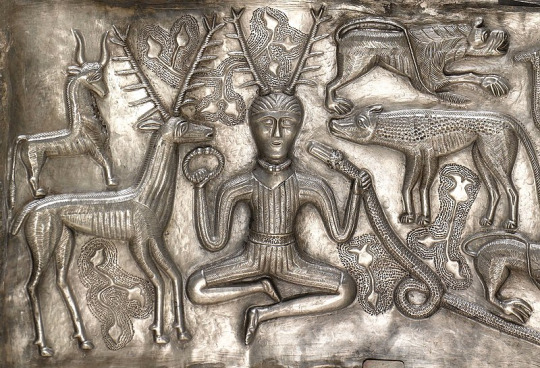
I/ What we actually have
As with a lot of Gallic gods, Cernunnos exists not in legends or myths, but through a name and a visual. The name Cernunnos is found three times all on its own in Gallic documents. One was a Greek inscription from Montagnac that only says "This is dedicated to Karnonos of Alisontia". The other two are identical inscriptions found in Luxemburg (near Steinsel), votive inscriptions of wish-offerings merely saying "Deo Ceruninco". There is actually a fourth inscripton of the name Cernunnos - and it is from this one that we get the spelling we use today - but it is a special one. Unlike the other three, this one has a picture alongside it identifying the god visually. It is the famous "pilier des Nautes" found under Notre-Dame-de-Paris, the "pillar of the Nautes", the "pillar of Boatmen", considered one of the most important Gallic monuments (because it depicts a set of divine portraits with their names explicitely spelled out).
It is only thanks to this pillar that we know today that the many depictions of a male horned god found across Gallic art are meant to be Cernunnos. There are too many visual depictions of him to be listed here (sixty or so were found by archeologists), but among the most famous is the one I put a picture of above: the Cernunnos of the Gundestrup cauldron found in Denmark.
Here is what Cernunnos looks like on the pilier des Nautes:
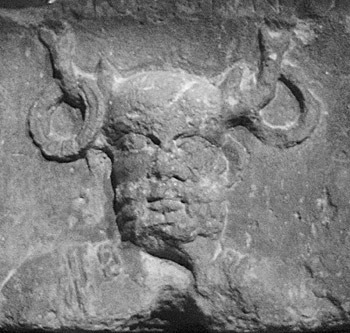
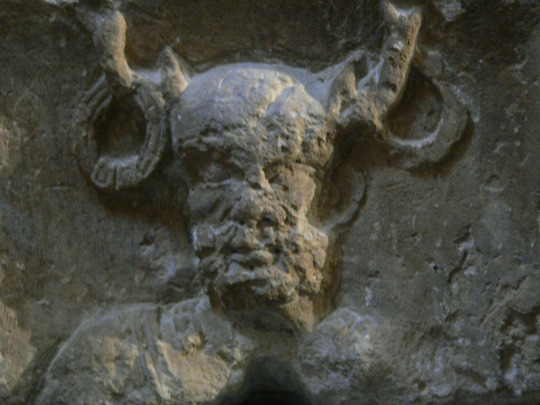

So, we have a name and a bunch of pictures. Let's try to break it all down.
When it comes to the name, Cernunnos/Karnonos, it is commonly agreed by etymologists and those that studied the Gallic language that it means "the horned god". "Carnon/Karnon/Karn" was known to mean "horn", both in the sense of animal's horn and a blowing instrument - it was tied to the Gallic tribes known as the Carni and Carnutes, and to the Celtic carnyx. The "kern" part is also considered to be equivalent to the Old Irish "cern", which was associated with horned beasts. Some have pointed out that if the "Cern" of "Cernunnos" means horn, the "unnos" could be a suffix meaning "beautifully" - so instead of Cernunnos being the "horned god" or the "horned one" it would mean "He who is beautifully horned" or "He with beautiful horns". But all in all, his name stays connected to horns.
[But is it truly his name? This is another debate typical with the gods of Gaul: we do not know the differences between the proper names, the titles and the nicknames. It could be (to take a Greek comparison) like Hestia's case, where he names literaly means "hearth" but is a proper name ; or it could be like the "Old Man of the Sea" which was a generic nickname for a whole group of sea deities.
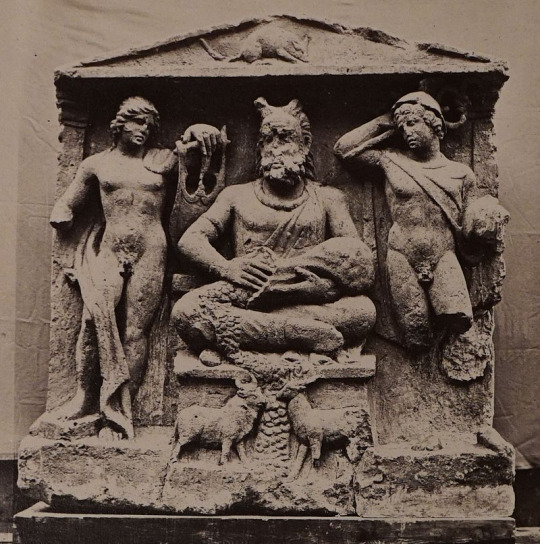
Now let's talk about the images of the god. Thanks to having so many depictions of him, we can identify recurring traits that define his visual.
Cernunnos always appears with his legs crossed, in a position (the "lotus" or "yoga positon" to take Asian terminology) that is considered, depending on the sources, either "very unusual for a god of Gaul", either "absolutely typical of Celtic representations of gods, warriors and heroes"... Well, he is almost always in the "lotus position" - in rare cases, he can be standing up. Cernunnos is also always wearing a torc, the traditional Gallic ornament, though he isn't always wearing it around his neck as one would expect: sometimes he holds it in his hands, other time it hangs from his antlers. Speaking of antlers: as we said, Cernunnos is a horned god, and he is usually depicted with antlers. But sometimes, more rarely, he rather sports goat horns - maybe it is a Romanization effect, as he got confused with Pan?
Cernunnos is always a male figure, though his actual age is unclear. Sometimes he is a mature and bearded man, but we also have "ephebe" depictions of him as a beardless youth - that some researchers even go as far as to describe as "child-like". Similarly, he keeps oscilatting between being a singular entity, and a triple-god with three heads or three faces. The disposition of the three faces can be really weird and freaky - for example, he can have a regular human head, and two small human faces growing from either side of his neck, or from the top of his head.
He usually always has a bag or basket with him, a bag that he eithers opens or that is simply sitting before him, spilling its content: sometimes the bag is filled with food, other times with coins, and other tims yet with grain. Cernunnos is usually sitting in the middle of a trio (as in two other humaoid or divine figures are by his side), or he is surrounded by various animals - which he can be seen holding with one hand, or petting near his lap. There are various animals he is associated with - we have seen him with stags, with bulls, with rats, with dogs, with lions, with goats... He is most notorious for being often depicted with the symbolic-mythical beast of Gaul known as the cryocephal snake: a ram-headed snake, whose exact meaning is still unclear to this day. However, Cernunnos seems to really like them: sometmes they just sit side by side, sometims he holds it by the throat, sometimes he feeds it, and other times two of them sit on his lap.

(This depiction above lacks any horns, but there are two holes at the top of the head implying that the horns were a different part of the statue added separately - which is very interesting in the theory of Cernunnos having antlers that "fall")
One of the problems with the Cernunnos visuals is that it is not clear where they stop, as we got a wide range of variations between the animal and the man. For example, there are strong theories according to which Cernunnos appears on the Strettweg chariot, as the tiny deer with oversized antlers that two men are holding (which would mean Cernunnos could be depicted as a full stag without human traits):
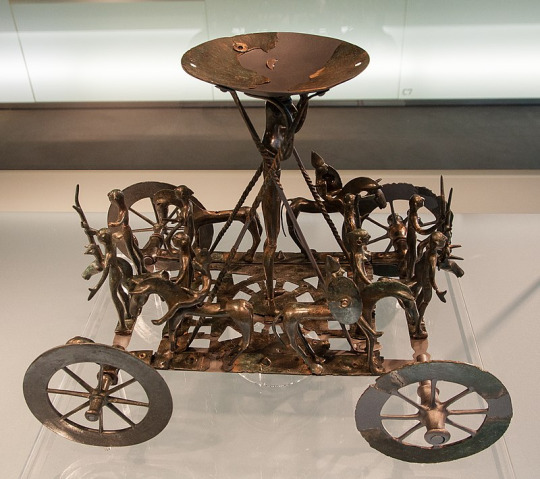
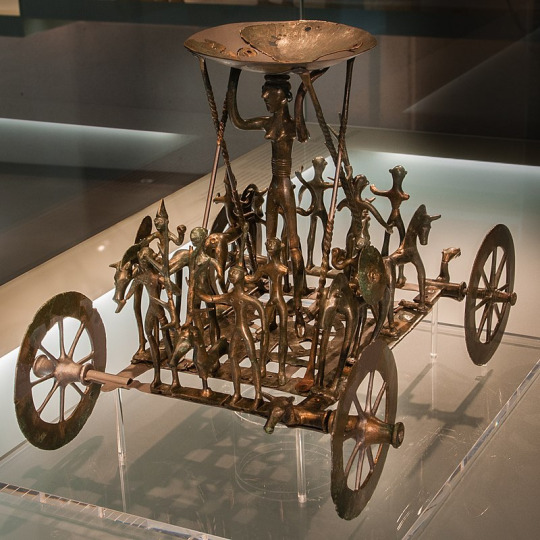
And on the opposite spectrum, a Gallo-Roman statue was found in Amiens of a fully human deity... except for one deer ear on the side of his face. One of the theories to explain this bizarre statue of the first century claims that it is an hyper-Romanized depiction of Cernunnos - though other theories do exist (for example, when the statue was discovered, it was originally believed to depict Midas, with a variation of the "donkey ear" punishment):

And you also have in Bouray a cross-legged god with deer legs rather than antlers or ears:


Given how "late" the visual depictions of the gods of Gaul was, and how the Romanization of Gaul strongly encouraged and favorized the depiction of deities as humanoids (to fit with the Greco-Roman deities), it is very likely that Cernunnos started as a divine stag, as fully animal, and then slowly, especially under the Roman influence, became more and more humanized... (There's also a fascinating case of antlered-goddesses at Clermont-Ferrand and Besançon, but that's for later).
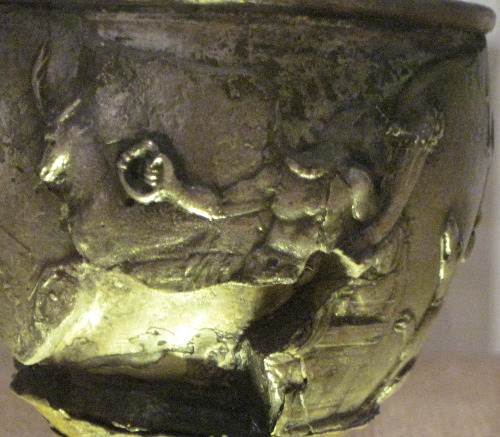
II/ Some theories
Now that we have the name and the visuals done... What's Cernunnos deal? Again remember we can only make theories based on these fragments and their context - but we do not know for certain if it is the truth.
A: It is agreed that Cernunnos is a nature god, and a god of abundance. The fact he is half-stag, and usually depicted with animals, and even holding them in a gesture of domination or use, shows that he is a fauna god, which prompted some researchers to identify him as one of the avatars of the "Lord of Animals, Master of Wild Things" archetype of Indo-European myths. But more importantly we are certain that he dealt with abundance and prosperity - thanks to him always having a big bag of grain, food or money. He was very clearly a god of riches and wealth - be them natural (grain, food) or manufactured (coins). Some have highlighted the idea that this tied to the symbolism of "forests that have big strong stags in them are bound to be fertile places filled with resources". Cernunnos' ties to abundance cannot be denied because in some Classicized depictions of him (such as the silver goblet above), he is literaly seen holding a cornucopia, aka a horn of abundance.
Some people even want to push the domain further by thinking Cernunnos might have been a god of sexual and reproductive fertility - but this is not based on any visual or religious clue. Rather this theory ties on the European symbolism of the stag as a symbol of virility and reproductive prowess, so it is a purely contextual reading, to be handled carefully. We are only truly certain that Cernunnos offered lots of money, lots of grain, lots of food, and lots of animals (him being surrounded by animals might be an extension of the "I offer you this bag of grain" visual, since animals were hunted down for food, so he isn't just a god of good crops and economic riches, but also one that ensures a plentiful hunt).
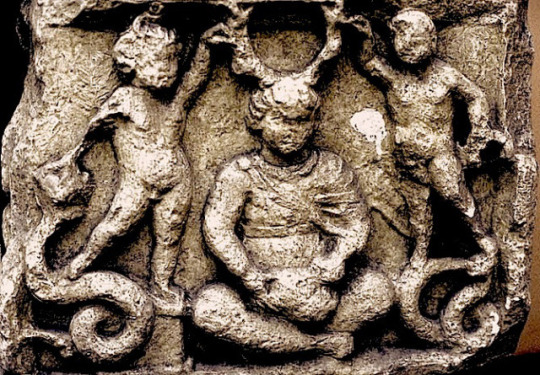
B: There is a strong theory going around that Cernunnos might be a seasonal god, or a deity of the seasonal cycle. This idea comes from various elements pieced together - and which added with the A theory above, would make this go a sort of "Father Nature" figure. It all starts wth the European symbolism of the antlers and the stag in general: given the antlers fall and grow with the turn of the seasons, the stag has been used heavily in Europe as a way to measure the year or symbolize seasons. Some researchers theorized, based on how the size of Cernunnos antlers changes through depictions, and on how he is sometimes a beardless youth sometimes a bearded mature man, that Cernunnos, like the stag, had a seasonal cycle. For some he just loses and grows back his antlers (there is a Cernunnos depiction at Meaux with what seems to be the stubs growing back after antlers fall, which would support this theory), but others push it further by claiming the god died and was reborn each year with winter/spring - an idea inspired by the Indo-European archetype of the dying/sacrifical vegetation god.
There is a specific depiction of Cernunnos that ties into this whole - and I will have to trust Yann Brekilen's word for this, as I couldn't find any picture of the engravings he described. According to him, on the Gallo-Roman Germanicus Arch/Arc, by Saintes, there is a dual depiction of Cernunnos. On one side of the Arch, he is part of a trio: he is sitting crossed-leg with antlers on his head, but naked (usually Cernunnos s clothed in some ways). By his side there is a man armed with a club/mace (which might be tied to the "god with the mace", we'll see that in later posts), and a woman holding a cornucopia. Now, that's on one side of the monument - but on the opposite side, the scene is reproduced... with both the armed man and the antlers of Cernunnos missing, only leaving a regular cross-legged naked man, and the cornucopia-woman. Speaking of this cornucopia-woman: there are repeated talks and interpretations of any female figure by Cernunnos' side to be a "Mother-Goddess" or Earth-Goddess supposed to be the wife/companion/lover of Cernunnos. This is all part of an effort to make Cernunnos a "father-god" (which makes sense in some ways), and it ties into the whole reading of his myth as being a seasonal cycle (the god dying and resurrecting after impregnating his female counterpart ; something the Wiccan mythology for example reused in their beliefs), but... If you ask me, I am not really convinced? A lot of people insist on there being a "Mother Goddess" clearly by Cernunnos' side, but sometimes you see these people reinterpret a lot of the visuals, and it is not obvious that the female figure is with him (Cernunnos is usually surrounded by male figures rather than female ones). Plus, we know the Mother Goddess of Gaul tended to come in three (the famous Matronae) so... I am a bit doubtful of that, but that's just me and because of a lack of convincing evidence.
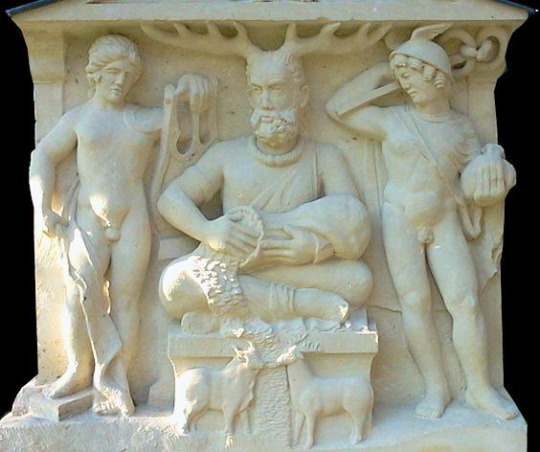
III/ Comparisons and equivalences
As I said in my introduction post, a lot of what we know about the Gallic gods comes from the syncretism the Romans operated with their own deities. And with Cernunnos it is... complicated. Because we do not know exactly who was the Roman equivalent of Cernunnos (since the Romans did not speak of him), and based on researches we have two likely candidates. It is very possible Cernunnos might have been split into those two Roman deities, or at least that his attributes led him to be interpreted as two deities mixed in one.
On one side, there is a very strong and popular theory that Cerunnos was the god Cesar, in his description of the religion of Gaul, called the "Dis Pater". "Dis Pater" was the Latin god that was equated and synthesized with the Greek Hades under the share nickname "Pluto", "the rich one". This was because Dis Pater was not originally a god of the dead in the old Italian religion - he was an underground god, indeed, but a chthonic god of riches and wealth, an earth-god of fertility (his very name meant "Rich Father"). This is what tied him to Hades, the richest of the Greek gods - and made him the new god of the underworld and the dead, Pluto. So, equating Dis Pater with Cernunnos makes sense as we do know that both deities were strongly associated with an earthly form of fertility: Cernunnos, just like Dis Pater, brought grain and earth-grown fruit, as well as precious metal (in the form of coins). Not only that, but Cernunnos was strongly associated with the ram-headed snake, and while we don't know much about this mythical being (typically a companion of male gods in Gallic art), it seems to have been a chthonian symbol, and perhaps even a form of guardian of the world of the dead (or a guardian of underground riches cousin of the dragons of legends). This is what led many to interpret Cernunnos as a chthonian deity, perhaps even an afterlife deity - a tradition that seems to have been in early Christian art, where Cernunnos was often associated with the "mouth of Hell" or the "entrance to Hades" (like the 9th century manuscript Stuttsgart Psalter, which illustrates Cernunnos in a depiction of the Christ descending into Limbo.
If Cernunnos is indeed Cesar's Dis Pater, then it would be extremely interesting, because Cesar wrote in his records that the peopleof Gaul believed Dis Pater to be their divine ancestor, and the "father of their race". Aka, the Gallic Dis Pater is meant to be an All-Father, the first ancestor of the Gallic tribes, and the origin of the human race (or at least of the people of Gaul). If Cernunnos is this Dis Pater, it would confirm his role as a "Father-God" and his links to a potential "Mother-Goddess". (It could also explain why he so persistantly wears a torc, as an emblem of the civilization and traditions of Gaul) If Cernunnos is also the Dis Pater, it would give him a role as a nocturnal god, since Cesar resumed in his texts (or rather "recaped" since he was doing a report based on Posidonius own records) that it was because the people of Gaul descended from Dis Pater that the druids measured the time not in "days" but in "nights"...
The other very likely candidate for the Romanized Cernunnos is the one we call the "Gallic Mercury". We know that Mercury was one of the most popular and widespread gods of Gallo-Roman gaul. Cesar did mention him as one of the most important gods venerated by the Gallic tribes before the omans arrive (though this would contadict the is Pater theory, since Cesar identifies Dis Pater and Mercury as two different deities in the Gallic beliefs). Still, Mercury was a god of commerce and riches before all - even more so than his Greek counterpart Hermes - so it makes sense that he would be present in the Gaul province of the Empire, which was big heart of commerce. And where Mercury has a pouch of coins, Cernunnos has a full bag of them... And in several Gallo-Romans depictions one of the two gods that surround Cernunnos is very obviously Mercury... [Several of the images in this post are of the altar of Reims, which depicts Cernunnos surrounded by Apollo on one side and Mercury on the other] And Cernunnos' presence on the Pillar of Boatmen implies he was tied to the fluvial sailors, and to the fluvial commerce and travels... And in Luxembourg we have Gallic depictions of stags vomitting coins, again insisting on how the stag was associated with riches... Even if you take Cernunnos as a chtonian god or death god, it ties to Mercury's role as a psychopomp inherited from Hermes ; and Mercury's presence by Cernunnos side on the altar of Reims for example makes sense if you consider one of the deities Cernunnos was conflated with was Pan (hence the goat horns) - aka, the son of Hermes... Everything is tied together into one big convoluted web of inter-mythologies.

And when it comes to comparisons to other Celtic mythologies, things are a bit... In French we say "vaseux" - basically there were parallels drawn between Cernunnos and Celtic figures of the Isles, but they rely on very meager if not unstable links. For example some have tried to identify the Cernunnos of Gaul with the Irish figure of Nemed (interpreted as a "stag-god" leading "stag-people" or "deer-people"), and in return the battle between Nemed and Balor for the land of Ireland was projected onto the scene depicted on the Arch that I described prior - a battle between the horned god and the god with the mace for the "earth-mother", the cornucopia woman, the land-goddess. The acceptance of this scene between the horned god and the mace god as a battle for the mother-goddess (which, I insist, was not PROVEN in any way and is completely hypothetic and theorized with no definitive proof - maybe the mace god is here to sacrifice the horned god for the cornucopia-woman, or maybe he is just here to cut off his antlers, or maybe the cornucopia woma cheats on Cernunnos wit the mace god, we cannot know), also led to vague comparisons being drawn to the story of Pwyll and Arawn and how they exchange each other's identities, but we are really in a stretch here.
More interestingly there is a Welsh comparison that could indicate a leftover of a Christianized Cernunnos in an Arthurian setting: the Owein tale (Mabinogi): Kynon, a knight of King Arthur's court, describes how in his youth he had to encounter an ugly knight clad in a black armor who had the information he needed to find his enemy. The knight lived by a "fountain" (a water stream) surrounded by wild and ferocious animals - and to give Kynon the information he needed, the ugly black knight struck a stag nearby, and the animal lowers its head in the direction Kynon must follow. It is very plausible that this supernatural knight who hits an informative stag and who lives surrounded by wild animals is a form of Christian censorship or caricature of a Cernunnos figure, going from a wise and benevolent stag-god to an ugly evil knight who abuses animals, and who has his duality human/beast split between the knight and the stag.
There were also tenuous elements that made people consider the Irish Conall Cernach (known for being one of the sidekicks of Cuchulainn) as a diluted version of Cernunnos as a "Master of Beasts" - more precisely an episode in "The Cattle Raid on Fraech" where instead of killing a monstrous snake, Conall somehow tames it and wears it as a belt, has been compared to Cernunnos' handling of snakes and ram-headed snakes. And don't even get me started on the many, MANY saints of Catholicism that are supposed to be leftovers or reinventions of Cernunnos (saint Ciaran of Saighir, because he tamed wild beasts including a stag ; or the saints of Bretagne Edern and Théleau both supposed to ride a stag instead of a horse...).
The complicated thing (well ONE of the complicated things) with Cernunnos is that he is tied to the stag, and the stag was one of the most prominent smbols and images of the medieval and proto-medieval imagery in Western Europe. You had lot of old mythology stuff that survived in modern days, but you also had lots of medieval symbolism and images (like how the flying stag was one of the symbols of the king of France), and a HUGE re-use of the stag by Christianity in various forms (from the antlers falling being used as a symbol of the Resurrection, to the hunt for the white otherwordly stag of Celtic myths suddenly becoming a hunt for Christ incarnate when a glowing cross appears above the stag's head...). As such it is hard to pin-point what the Gauls truly believed the stag meant, versus the stag symbolism that arose in the Middle-Ages.
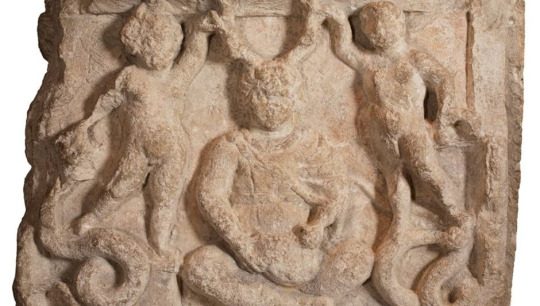
To conclude this post, while I said I had my doubts with systematic identifications of Cernunnos as a companion of a Mother-Goddess, I want to briefly return about a fascinating trivia of Gallic researches: the existence of a female version of Cernunnos, a "Cernunna" we could jokingly say.
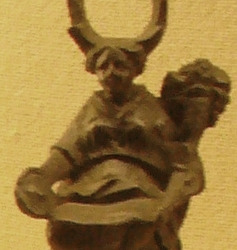
Little figurines and statues were found of a horned goddess - sometimes with antlers! - in both the area of Clermont-Ferrand (which was the domain of the Avernes folk) and around Besançon (the Séquane folk). Who were these goddesses? Local variations of Cernunnos? Sisters, daughters or wives of the god? Or completely unrelated deities? Were they one or several (some are more matronly, motherly figures such as the one with antlers above, others have Venus-like poses unveiling their breast and legs such as the bull-horned below)?
We will probably never know - but while they can be incarnations of this famed "Mother-Goddess" companion of Cernunnos everybody speaks about (and links to the importation of the cults of Demeter and Cybele in Gaul), it is VERY likely these statues date from the Gallo-Roman era and from a Romanized version of the Gallic religion. Indeed, they are all tied by their attributes - they hold a cornucopia, and a "patère" (sacred vase for religious libations). Attributes present in very Romanized Gallic goddesses (such as Rosmerta), but also in typical Roman deities (mainly the lares). Add to that how the adjunction of a male attribute (the stag antlers or bull horns) to a female figure is VERY unusual for Gallic depictions (where the genders are neatly split), while the divine androgyny was a feature of Greco-Roman mythology (the effeminate Apollo and Dionysos, the masculine goddesses Athena and Artemis, the mythical Hermaphrodite...), and it is very likely these statues of the "Cernunna" are the result of the Roman religion "breeding" with the Gallic beliefs...
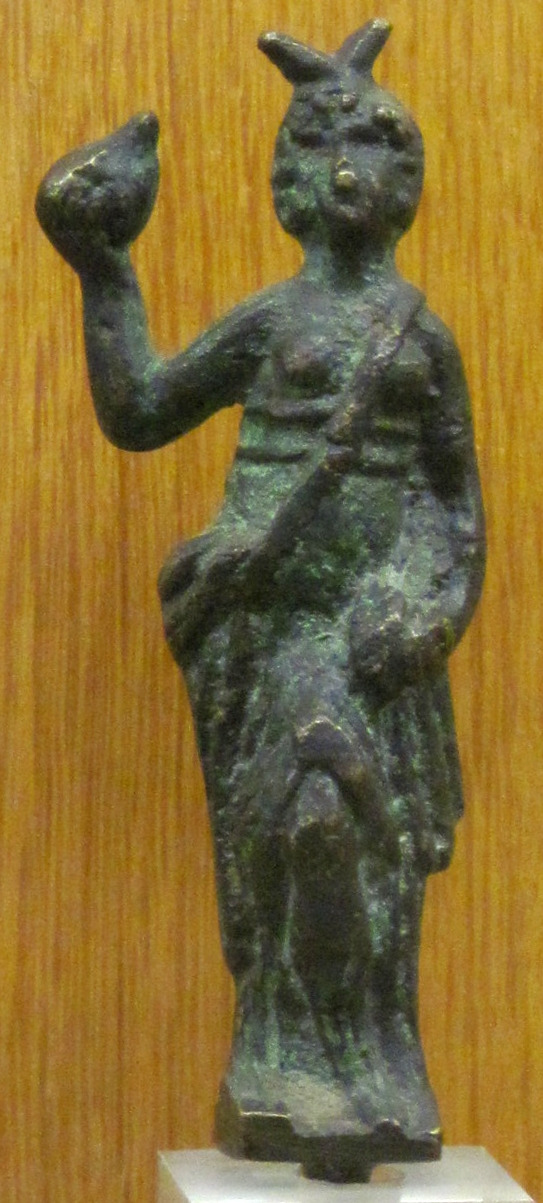
#gods of gaul#gallic mythology#cernunnos#ancient gaul#religion of gaul#gallic religion#gallic gods#gallic goddesses
125 notes
·
View notes
Text

@programgamer Fantasy is hard! A lot of the ones I've popped in there are just... extra eccentric serifs.

For like... a classic fantasy, something like this celtic inspired font is nice. that little tail on the m's and n's and ornamental capitals are great for getting whimsical

Bargers is a fun one, it's giving dark carnival with the little bumps in the middle and extra ornaments hanging everywhere. Why do the circles have pupils if not to behold you better?


And sometimes you just need a font for your magic circle. Here are two flavours
61 notes
·
View notes
Text

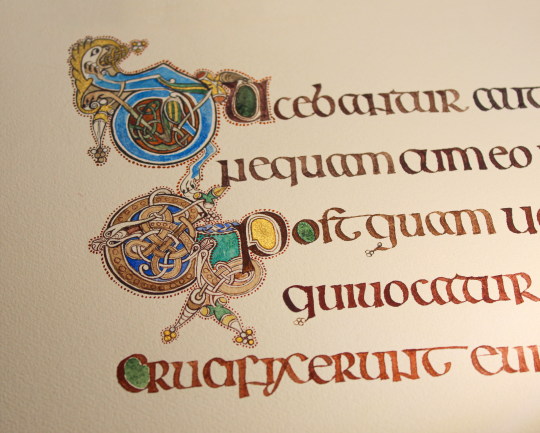
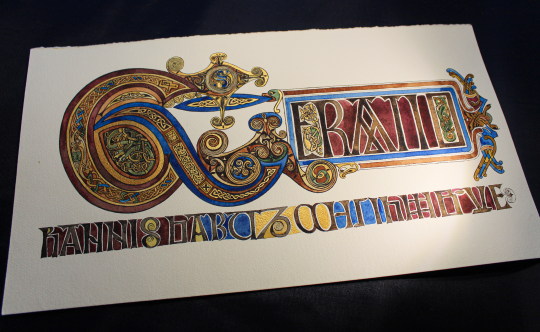
My copy from the Book of Kells, illuminated manuscript created in the 9th century in Ireland
#calligraphy#Illuminated Manuscripts#broad pen#insular uncial#insular halfuncial#halfuncial#medieval#Book of Kells#celtic ornament#celtic art#celtic#celtic style#celtic knot#celtic design#celtic illumination#celtic calligraphy#irish calligraphy#Ireland#irish#medieval art#medieval book
40 notes
·
View notes
Text
ART NOUVEAU
Art Nouveau appears at the end of the 19th century and spreads widely across Europe and the United States. It draws inspiration from the Japanese, Oriental, Byzantine and Celtic arts as well as Impressionism. The peculiarities of the style are highlighted decoration and strong interest in the ornament and curve line. Stylised floral motifs and human images combined with asymmetric compositions are used. The emotional suggestions that are inherent in style are: refinement, elegancy, spirituality, variability, expressiveness, romance, love, tenderness, nostalgia, dreaminess.
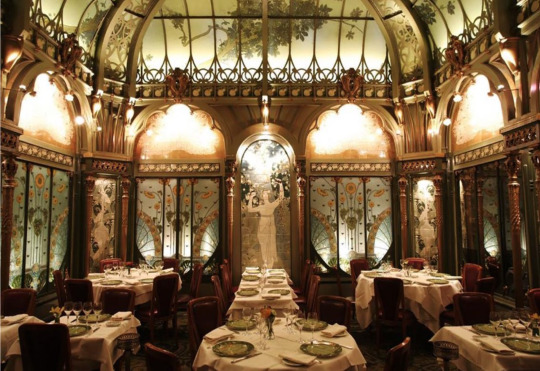
.

Origin of Art Nouveau.
On the one hand, it is the English Arts and Crafts movement from the middle of the nineteenth century and headed by William Morris. The basis of this movement is Morris's idea of affirming the value of handmade handicrafts against the industrial products. His followers replace cheap mass production with quality handmade items. They stem from the beauty of natural forms, the tradition of old medieval styles and folklore.
On the other hand, the ideas of Art Nouveau are also based on the works of Augustus Pugin, who seeks reforming society through the plastic forms of Gothic, which he considers to be the bearer of Christian values.The artists and designers of the 1990s developed the ideas of Puigin and Morris and enriched them with new forms and materials. This also determines the aesthetic basis of the new style. The materials used for everyday use are very high quality.
It has been assumed that all forms of plastic visualisation are equally valuable (until this moment it is believed that such activities are under the artist's dignity.)
The essence of Art Nouveau is that the art shape is particularly important, it is even more important than the content and even the most prosaic content can be represented in a highly artistic shape.
Another important aesthetic feature is the appearance of the female figure. Portraits of women are common in this style. The most common image is just a woman as a center of composition, in the way that the figure is an integral part of the ornament in the whole.

The art of posters is also developing in Paris.The emblem of this art becomes Alphonse Mucha. He designs theatrical posters and settings, but also made designs multiple packaging and patterns for mass consumption. Frequently used in them are stylised images of women whose long hair has been turned into complex decorative ornaments.

Like many of his peers Toulouse Lautrec follows the principles of Japanese engraving, which is based on the flat construction of the shapes, the exaggerated facial expressions and the strong theatrical compositions. The objects of his inspiration are dancers, actresses, singers, courtesans. He works a lot in the field of poster and advertising, raising this genre to the level of real art.

Gustav Klimt is the leading figure of the Vienna Secession. His works are very decorative and filled with erotism. Again, the woman is his main inspiration and is elevated to a cult.
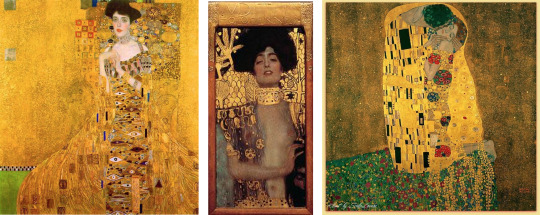
In conclusion, Art Nouveau is one of the last attempts to create a common style in plastic arts, architecture, interior and furniture design, poster, book design, and more.
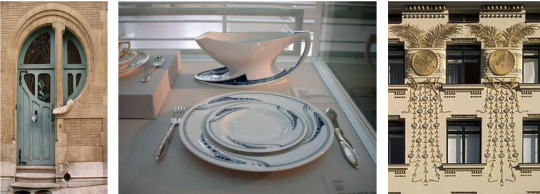
The aim of the architect, the artist, the designer is the creation of a synthetically complete work of art that enters the private life of man through the items that surrounds him. That's why this style is cosmopolitan.
As far as Art Nouveau artists and designers are concerned, it can be said that they develop and enrich the ideas of Pugin and Morris, and because of everything listed above we can define their work as a top-class art.
74 notes
·
View notes
Text
i was just about to watch this video by Cheyenne Lin
youtube
Avatar and the Wh*te Imagination (or lack thereof)
about the limits of white imagination and how evident it is in the Avatar movies, and it just reminded me that james cameron worked with an ethnomusicologist, Dr Wanda Bryant, to make music for the na'vi because he wanted something that "would sound like nothing we’ve ever heard on earth" then he decided what was made was too otherworldly and decided that their music should just be what white people would call "alien" and ethnic, aka, whatever music exists in African, Asian and Native American cultures (and that was the final result).
Originally there were many influences coming from all over the globe, but when Cameron listened to the demos, he claimed it was too recognisable as well as too 'weird', albeit for white people and just pushed for a more 'down to earth' version. Avatar is evidence of the continuation of generalized exoticism and stereotyping still being a driving force in Hollywood

[IMAGE ID: A screenshot of a segment from the journal entry written by ethnomusicologist, Dr Bryant discussing the process of creating the music for the avatar films that reads:
"In our initial phone conversation, Horner asked me to find unusual musical sounds that “no one has heard before,” by which he really meant sounds not readily recognizable by the average American movie-goer as belonging to a specific culture, time period, or geographical location"
/END ID]
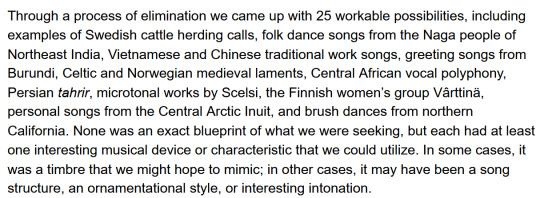
[IMAGE ID: A screenshot of a paragraph from the journal entry written by ethnomusicologist, Dr Bryant discussing the process of creating the music for the avatar films that reads:
"Through a process of elimination we came up with 25 workable possibilities, including examples of Swedish cattle herding calls, folk dance songs from the Naga people of Northeast India, Vietnamese and Chinese traditional work songs, greeting songs from Burundi, Celtic and Norwegian medieval laments, Central African vocal polyphony, Persian tahrir, microtonal works by Scelsi, the Finnish women’s group Vârttinä, personal songs from the Central Arctic Inuit, and brush dances from northern California. None was an exact blueprint of what we were seeking, but each had at least one interesting musical device or characteristic that we could utilize. In some cases, it was a timbre that we might hope to mimic; in other cases, it may have been a song structure, an ornamentational style, or interesting intonation."
/END ID]

[IMAGE ID: A screenshot of a paragraph from the journal entry written by ethnomusicologist, Dr Bryant discussing the process of creating the music for the avatar films that reads:
"Horner then met with Jim Cameron for his input on our musical ideas. Cameron is a very hands-on director and wants to be kept in the loop about all major decisions. Most of the ideas we presented were dismissed by Cameron out of hand, rejected with appropriately blue language as either too recognizable (“Oh, that’s Bulgarian”) or just “too fucking weird!” Half a dozen examples were approved as possibilities."
/END ID]
You can read the full article here:
There is also a video by sideways that discusses this (if you don't want to read):
youtube
#avatar#avatar 2#sorry for the long post i just.... its the avatar hater in me#i hate this racist alien franchise so much#ref#text#film#i wasnt sure whether to put any of this under a cut#but i dont think this is too long ill have to see when it posts#Youtube#music
457 notes
·
View notes
Text

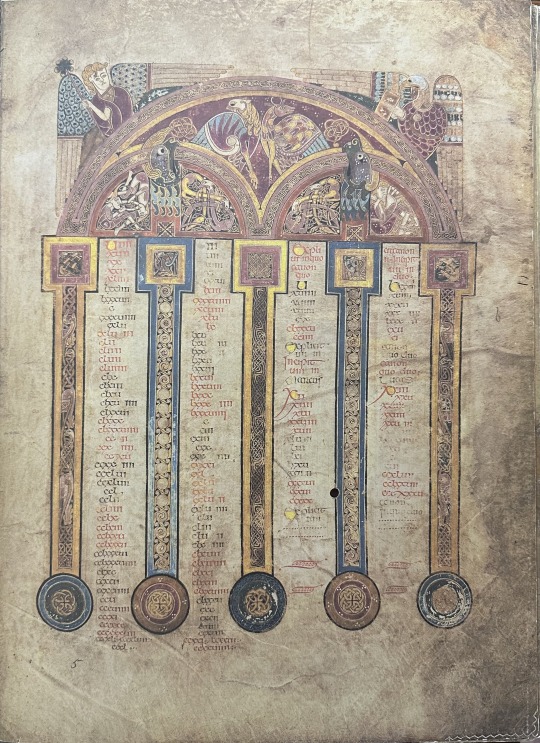



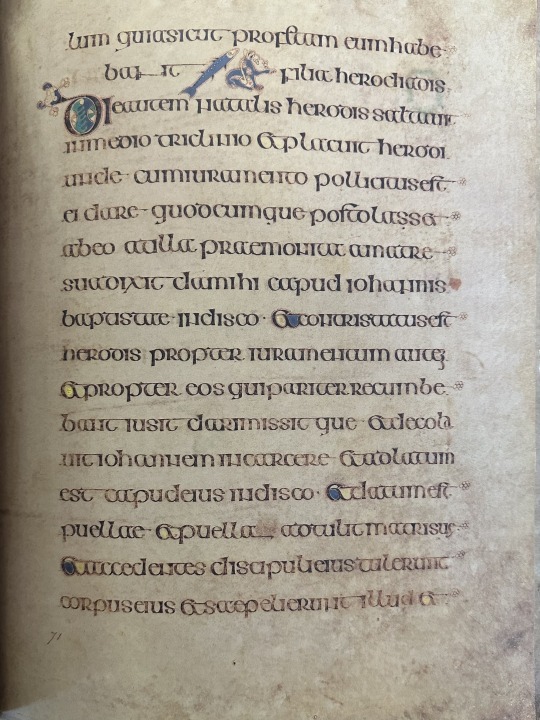

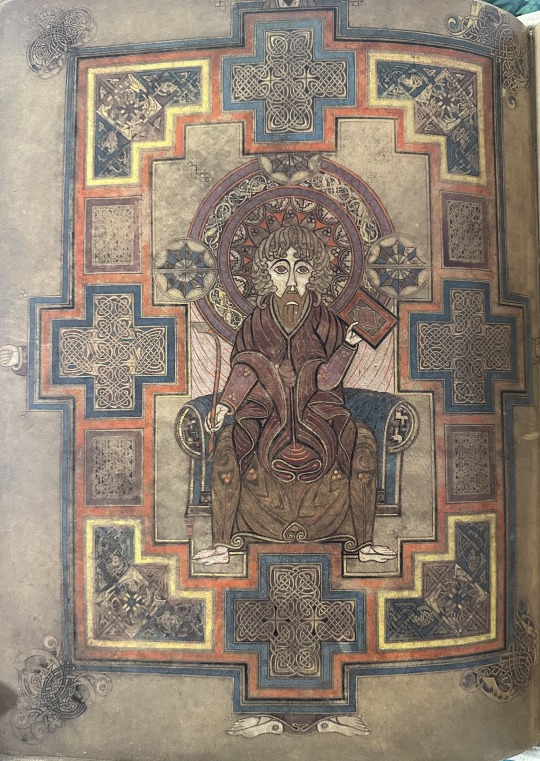
Manuscript Monday
This Insular manuscript was created by Irish Catholics, who were well known to be stewards of knowledge and artistic ability during the ‘dark ages’ of the 6th-10th centuries CE. In particular, the Insular style consists of flattened, two-dimensional figures of people and animals accompanied by elaborate ornamentation throughout its pages. We often see interlacing designs and Celtic knots within this ornamentation and the proportions and rendering of the figures and architecture seen throughout the manuscript are not always realistic. For example, in the Book of Kells, produced around 800 CE by Irish monks in Scottish west-coast island of Iona, the columns holding up the arches on canon tables are circular and would lack structural integrity in the real world, for obvious reasons. We can see the flattened, strange rendering of figures on folio 32v (shown below), which is a depiction of Christ Enthroned. Christ’s knee is lifted to hold up the codex in his hand, but the placement of his knee is anatomically incorrect. We also see the flatness of the figure and the inclusion of ornamentation throughout the image, and we can see even more of this decoration on carpet pages throughout the manuscript. The Insular style was not only limited to manuscripts but was also used in metal objects like broaches, chalices, sculpture, and architecture which are also said to have been inspiration for Insular style manuscripts.

Our copy of the facsimile of the Book of Kells was published by the Faksimile Verlag of Luzern, Switzerland in 1990 and includes a separate volume with commentary edited by the noted Trinity College librarian Peter Fox. If you have the urge to see the original Book of Kells, it is shown in the Trinity College Library in Dublin. The library shows two folios of the manuscript at a time and changes the pages shown every twelve weeks.
View more Manuscript Monday posts.
– Sarah S., Special Collections Graduate Intern
#manuscript monday#book of kells#ireland#kells#illuminated manuscripts#manuscripts#facsimiles#Faksimile Verlag#iona#insular#insular style#carpet page#canon table#trinity college#Peter Fox#trinity college library#dublin#Sarah S.
67 notes
·
View notes
Text
Newest drama I stumbled upon on tiktok is a video where a white girl puts jewelry and other charms in her hair, others label it “trinket hair,” and a handful of black creators accuse those people of cultural appropriation, as though hair ornamentation is something exclusive to loc hairstyles or black culture. It’s not. I just came across a video by a black woman briefly applauding the original tiktok creator for apologizing (for what?) and, you’ll never guess it, spending the rest of the tiktok telling people to go check out the hair beads that she sells on Etsy. Also this comment on that tiktok

Simply thrilled that an indigenous woman has been given permission by a random person on tiktok to wear fucking beads in her hair.

The original video by the way, and I think, though I can’t be sure because the original video has been deleted, I think the music she chose to put over this is a song by Celtic woman, which is telling to me as to where she’s drawing inspiration from.
#and of course there are so many white women self flagellating in the comments and in stitches#the main perpetrators of racism have again become white women this time for putting charms in their hair in an attempt to be whimsical and#fairy-like
120 notes
·
View notes
Text

This is baby Sansa at the start of AGOT to ME! She’s described as having high cheekbones, deep blue eyes, and wavy auburn hair. This is what I’m picturing when reading her chapters and I had to draw it.
I put her in a sort of Celtic cloak because the way the Northerners speak in the books makes me think Scottish. But also definitely Russian influences up there in the cold so I put a little kokoshnik on her in the Stark colours. I imagine up North they don’t do much ornamentation with their outfits but Sansa would want to dress up a little and wear blue to match her eyes/also for the colours of her mother’s house.
87 notes
·
View notes